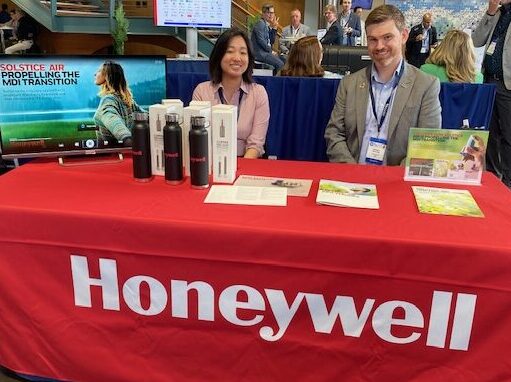Other talks on the new propellants included a presentation by David Lewis of Oz-UK, which is partnered with Bespak on LGWP MDI development projects, who discussed “A Priori Formulation Design of Solution Metered Dose Inhalers with Next Generation Propellants,” in which he described his “armchair formulation approach” using a case study involving delivery of melatonin via MDI. Bespak and H&T Presspart, which are partnered on offering services for the transition, also offered a workshop on “The Transition To Low GWP Propellants In pMDIs – Increasing Your Probability of Success Using a Collaborative Approach.”
Biologics and RNA
Jenny Lam of University College London spoke to an audience of about 50 people at the AAPS Inhalation and Nasal Community meeting on the evening of May 7, providing a comprehensive overview of inhaled RNA development, including potential delivery methods and challenges that must be overcome. The following day, Lam moderated a session devoted to inhaled delivery of RNA therapeutics.
In his talk during that session, Jag Shur of RIGImmune highlighted some of the same principles discussed in the Inhalation 5.0 panel, saying that he learned long ago to “Put the technology in the product, not the other way around.” He suggested that RNA delivery is “where the party’s at” as we are moving toward precision medicine but warned that pharma companies are expressing increasing concern about cost of goods.
Shur described RIGImmune’s NEED platform which uses an oil-in-water nano-emulsion for RNA delivery. Like other speakers on inhaled RNA delivery, he described problems with the use of lipid nanoparticles for inhalation and noted Vertex’s statement in a report issued a few days earlier that the company “has implemented a temporary pause to the multiple ascending dose (MAD) portion of the Phase 1/2 study of VX-522, a nebulized CFTR mRNA therapy, in order to assess a tolerability issue.”
Francesca Ungaro of the University of Napoli Federico addressed many of the same challenges identified by Lam and Shur in her talk on “Addressing the Challenge of Respiratory RNA Therapeutics with Inhalable Hybrid Lipid-Polymer Nanoparticles” and described her work on hybrid lipid-polymer nanoparticles loaded with siRNA that are engineered to overcome barriers and to optimize deposition. She identified the difficulty of in vivo testing of these types of products as a major issue and suggested that whether in vivo testing can be avoided is an open question, asking whether a paradigm shift is possible.



